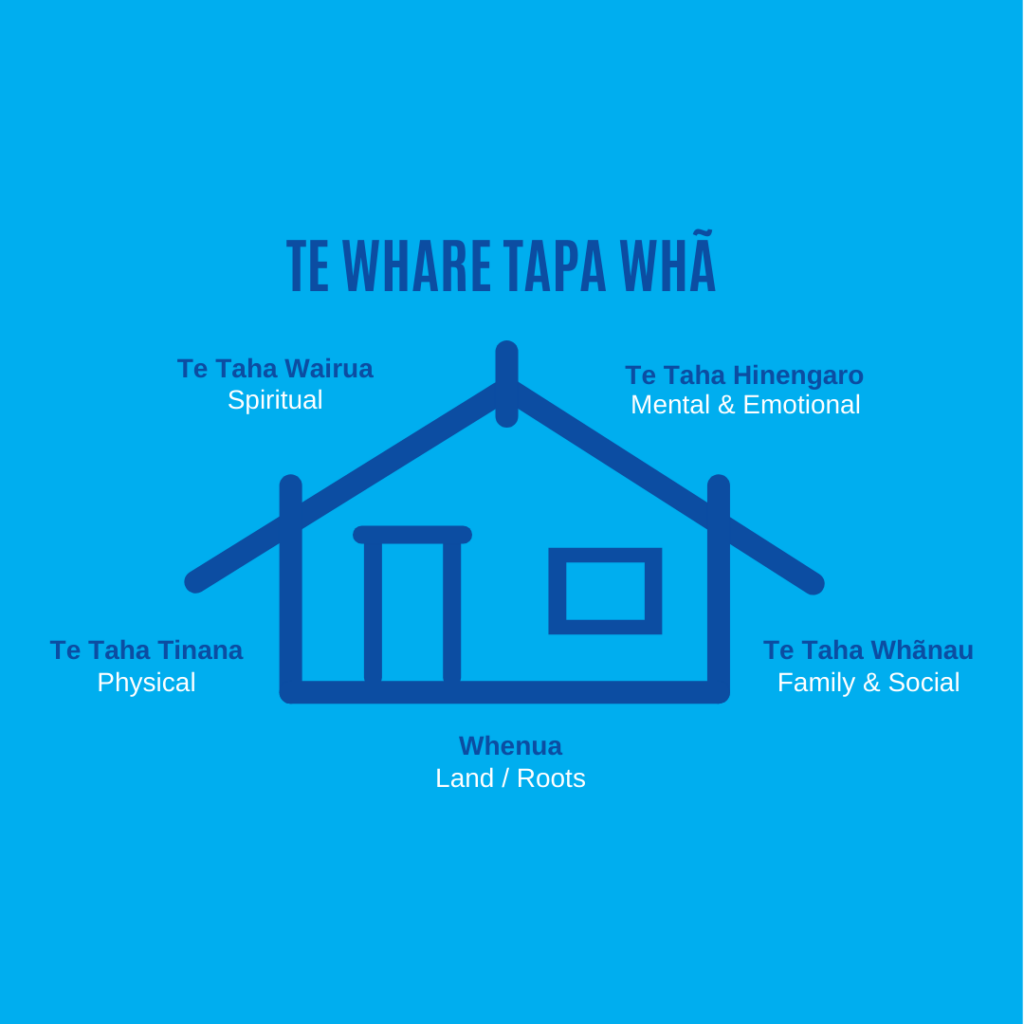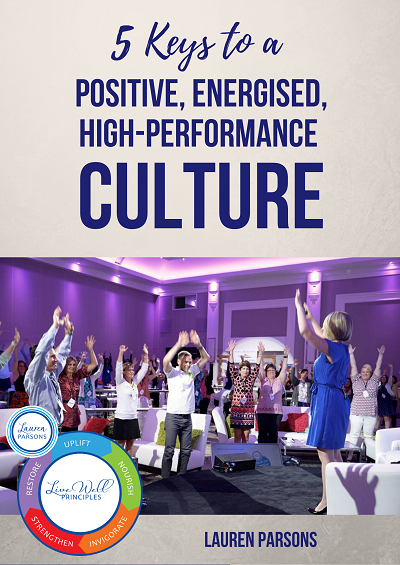You may have seen it before – “We need to get our staff healthy!”
Let’s put a fruit bowl in the staff room and give everyone pedometers – that’ll do it!
You can probably picture the result.
Initial enthusiasm for the free fruit might be high and some people may get on board with the movement trackers (especially if you add some sort of fun team competitive element), but does this address the real challenges in terms of wellbeing?
Probably not.

Wellbeing is about so much more than food and exercise and this is why we need to ensure we’re looking at all of the aspects that influence it.
Most of all, if you want to ensure long-term change rather than just a temporary high, it’s vital to focus on the levers that influence your workplace culture.
As Peter Druckers says “culture eats strategy for breakfast.”
In 1984 Sir Mason Durie developed Te whare tapa whā, a holistic model to help define and understand the difference dimensions of wellbeing.
It describes wellbeing based on the model of a house that is connected to the land (whenua) with four walls.
- te taha whānau (family & social wellbeing)
- te taha tinana (physical wellbeing)
- te taha hinengaro (mental & emotional wellbeing)
- te taha wairua (spiritual wellbeing)
If one wall of the house isn’t strong then it affects all of the others.

In a workplace setting it’s important to remember that people bring their whole selves to work and that if they’re worried about relationship challenges, a lack of purpose, poor health or mental distress it will directly impact on how they show up, on their ability to work and on their colleagues.
For any wellbeing initiatives to be effective, they need to take a holistic approach or be based on a holistic philosophy that addresses all of the different aspects of health.
Once you have defined an approach, start with your leadership team. Ensure that they understand what wellbeing really is and why it’s so vital to your organisational success and encourage small shifts in the way they show up.
In 2017, the WHO cited leadership commitment and engagement as the most important factor to achieve healthy workplaces[1].

Leadership matters because direct managers account for 70% of variation in staff engagement, and engaged workers are 28% more likely to participate in a wellness program offered by their company, than other employees[2].
If leaders set the example in terms of their own wellbeing – practising great self-leadership such as taking breaks away from their desk, staying active throughout the day, opening meetings with an energiser so meeting outcomes are more effective, or switching off from work in the evening – then staff can model these behaviours.
The challenge is that sometimes leaders expect others to “do as I say and not as I do” which doesn’t work over the long term. Even if you encourage staff to get up from their desks regularly or switch off outside of work to recharge, if you then stay stuck at your own desk all day and send emails in the evenings, it creates a non-verbal expectation.
Leaders must aim to create psychologically safe environment where team members feel accepted and respected. The business case for this is quite simple as you can save $1,887 per employee, per year, from lost productivity by improving your mental health environment rating from poor to good.[3] The returns are even higher when engagement is boosted alongside this.

This requires a high-trust environment that encourages people to be open and honest, building a real understanding one of another’s strengths and struggles.
In this sort of environment where it’s ok to try new things and perhaps to fail and learn from that, innovation can flourish – leading to unique solutions and constant improvement.
To build this sort of environment requires leaders who have great self-awareness, who champion the organisations vision and champion their team, who speak up authentically, who listen incredibly well and are open to feedback and who take ownership rather than casting blame.
Open communication is critical (and this doesn’t mean having an open door policy 24/7 – that’s bound to be inefficient) but instead having meaningful catch ups in place regularly where you ask key questions.
Culture change isn’t a one-off exercise, it’s something you continually nurture and reinforce. The business case for investing in wellbeing is very clear.
A holistic approach that starts at a leadership level will see your team thriving and performing at their best.
To find out more about boosting your teams wellbeing, feel free to download a complimentary copy of my eBook 5 Keys to a Positive, Energised, High-Performance Culture.
Simply enter your details here so we can email it out to you.
It will equip you with checklists of tips and ideas you can implement straight away to help your team thrive.
If you’d like to connect with me to discover how I can help your team thrive, feel free to book a chat into my online calendar.

What are the best ways you’ve found to enhance your staff wellbeing?
Feel free to leave a comment below, I’d love to hear from you.
If you enjoyed this article, please share it so it can reach more people and help them boost their health and happiness. With thanks in advance.
2 https://www.gallup.com/workplace/236531/why-workplace-wellness-program-isn-working.aspx
Share this Post

